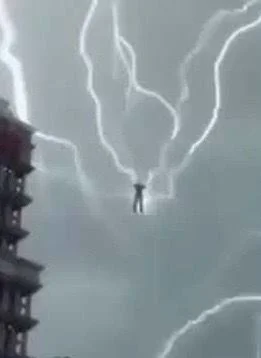In the realm of urban legends and mysterious phenomena, cursed buildings have long captured the collective imagination of people around the world. These enigmatic structures, shrouded in tales of misfortune and supernatural occurrences, have often been immortalized through haunting images that evoke a sense of unease and fascination. This article delves into the eerie world of cursed building images, exploring the stories behind these spectral structures and the psychological impact they have on those who encounter them.

The Allure of Cursed Buildings:
Cursed buildings possess a unique allure that transcends cultural boundaries. Whether it’s the dilapidated mansion at the end of the street or the abandoned asylum with a dark history, these structures beckon to the curious and adventurous. Images of such buildings often serve as a visual gateway into the mysterious narratives surrounding them, sparking the imagination and inviting contemplation on the forces that may linger within their walls.
The Role of Photography in Capturing the Cursed:
Photography has played a pivotal role in immortalizing the eerie beauty of cursed buildings. The juxtaposition of decay and architectural grandeur is a recurring theme in these cursed images, conveying a sense of timelessness and suspended animation. Photographers, drawn to the haunting aesthetics of dilapidated structures, seek to capture the essence of these buildings and the stories etched into their walls through their lenses.
Famous Cursed Buildings:
- The Winchester Mystery House: The Winchester Mystery House in San Jose, California, stands as a testament to the widow Sarah Winchester’s obsession with the supernatural. Images of its labyrinthine corridors, staircases leading nowhere, and mysterious architectural oddities perpetuate the legend that the house was built to appease vengeful spirits. Photographs of the mansion’s haunted interiors contribute to its mystique.
- Poveglia Island Asylum: Off the coast of Venice, Poveglia Island harbors the ruins of an abandoned asylum with a dark past. Cursed building images from this desolate island evoke a chilling atmosphere, capturing the decaying remnants of a place that once housed the mentally ill and later became the site of disturbing medical experiments.
- Pripyat, Chernobyl: The haunting images of Pripyat, the ghost town near the Chernobyl nuclear disaster site, have become iconic symbols of the consequences of human folly. Photographs of abandoned schools, amusement parks, and apartments frozen in time convey the eerie aftermath of a catastrophe, giving viewers a glimpse into a world forsaken by the invisible specter of radiation.
The Psychological Impact:
The allure of cursed building images is not merely aesthetic; it taps into the psychological fascination with the unknown and the macabre. The juxtaposition of beauty and decay triggers a visceral response, drawing viewers into a contemplation of mortality and the impermanence of human endeavors. The psychological impact of these images lies in their ability to provoke a sense of disquiet, prompting individuals to confront their fears and curiosities about the supernatural.
Urban Exploration and Its Consequences:
The phenomenon of urban exploration, where individuals venture into abandoned and off-limits locations, has contributed to the proliferation of cursed building images. While these explorations offer a firsthand look into the forgotten corners of our world, they also come with risks. Trespassing, structural instability, and encounters with the unknown pose dangers to those who seek to capture the essence of cursed buildings. The images captured in these precarious situations often carry the weight of both artistic expression and personal peril.
Cultural Perspectives on Cursed Buildings:
Cursed buildings are not confined to a specific culture or region; they manifest in various forms across the globe. Different cultures have their own interpretations of haunted places, each with its unique set of folklore and legends. The images associated with these cursed buildings often reflect the cultural narratives surrounding them, offering a glimpse into the diverse ways in which societies perceive and interact with the supernatural.
Ethical Considerations in Capturing Cursed Building Images:
The ethical dimension of photographing cursed buildings raises questions about respecting the dignity of these places and the privacy of their histories. As photographers document decay and desolation, it becomes essential to navigate the fine line between artistic expression and exploitation. The stories behind these buildings often tinged with tragedy, demand sensitivity and an awareness of the ethical implications of making their images public.
Cursed Buildings in Popular Culture:
Cursed buildings have become staple elements in literature, film, and other forms of popular culture. From classic Gothic novels to contemporary horror films, these structures serve as atmospheric backdrops that heighten the suspense and terror of the narratives. The visual representation of cursed buildings in various media further perpetuates their mystique, ensuring their place in the collective consciousness.
Conclusion:
Cursed building images, with their haunting aesthetics and tales of misfortune, continue to captivate audiences worldwide. Whether as a subject of artistic exploration or a catalyst for contemplating the unknown, these images invite us to peer into the shadows of the past and confront the mysteries that lie within abandoned walls. As we navigate the intricate interplay between beauty and decay, the allure of cursed buildings persists, leaving an indelible mark on our collective imagination.
